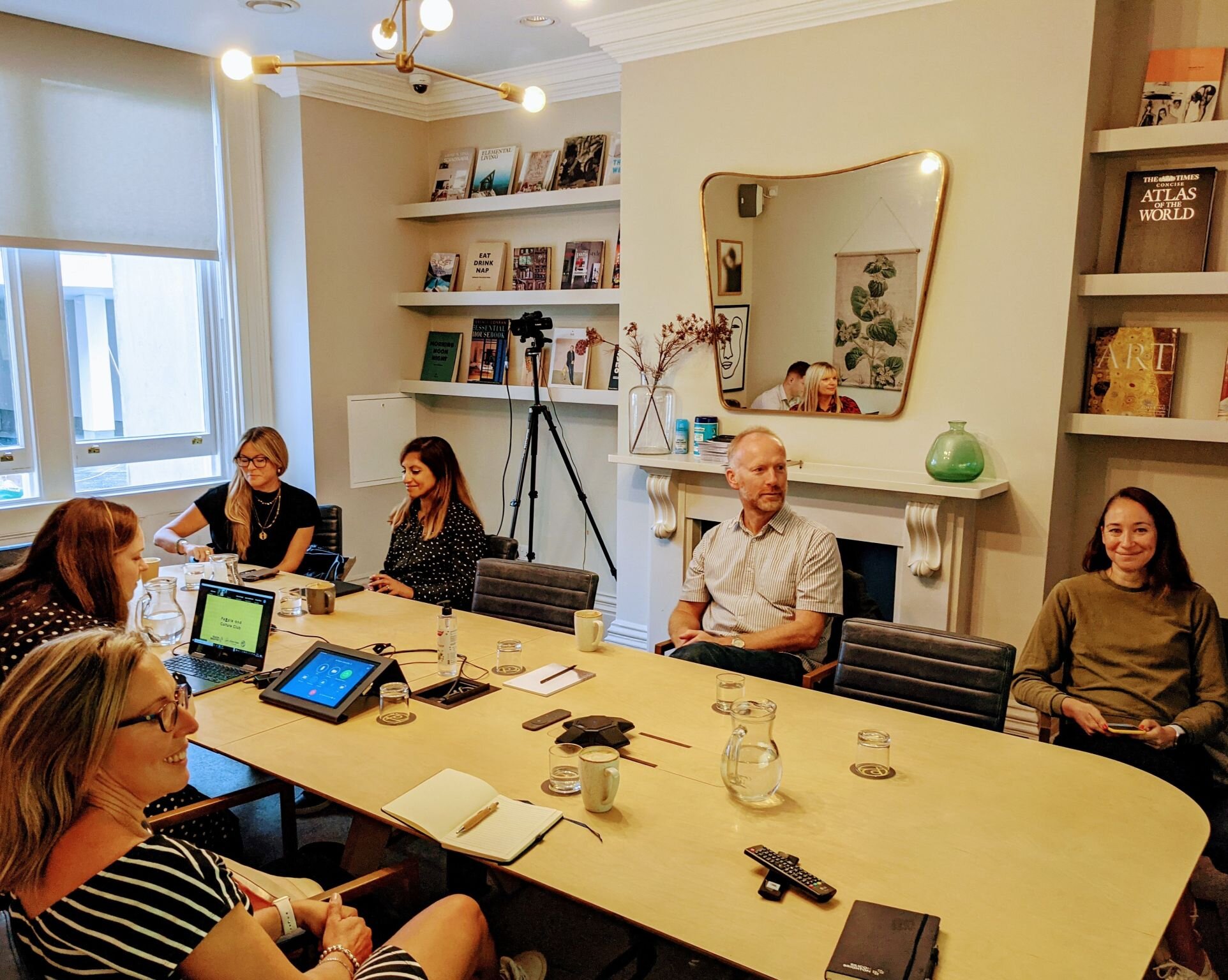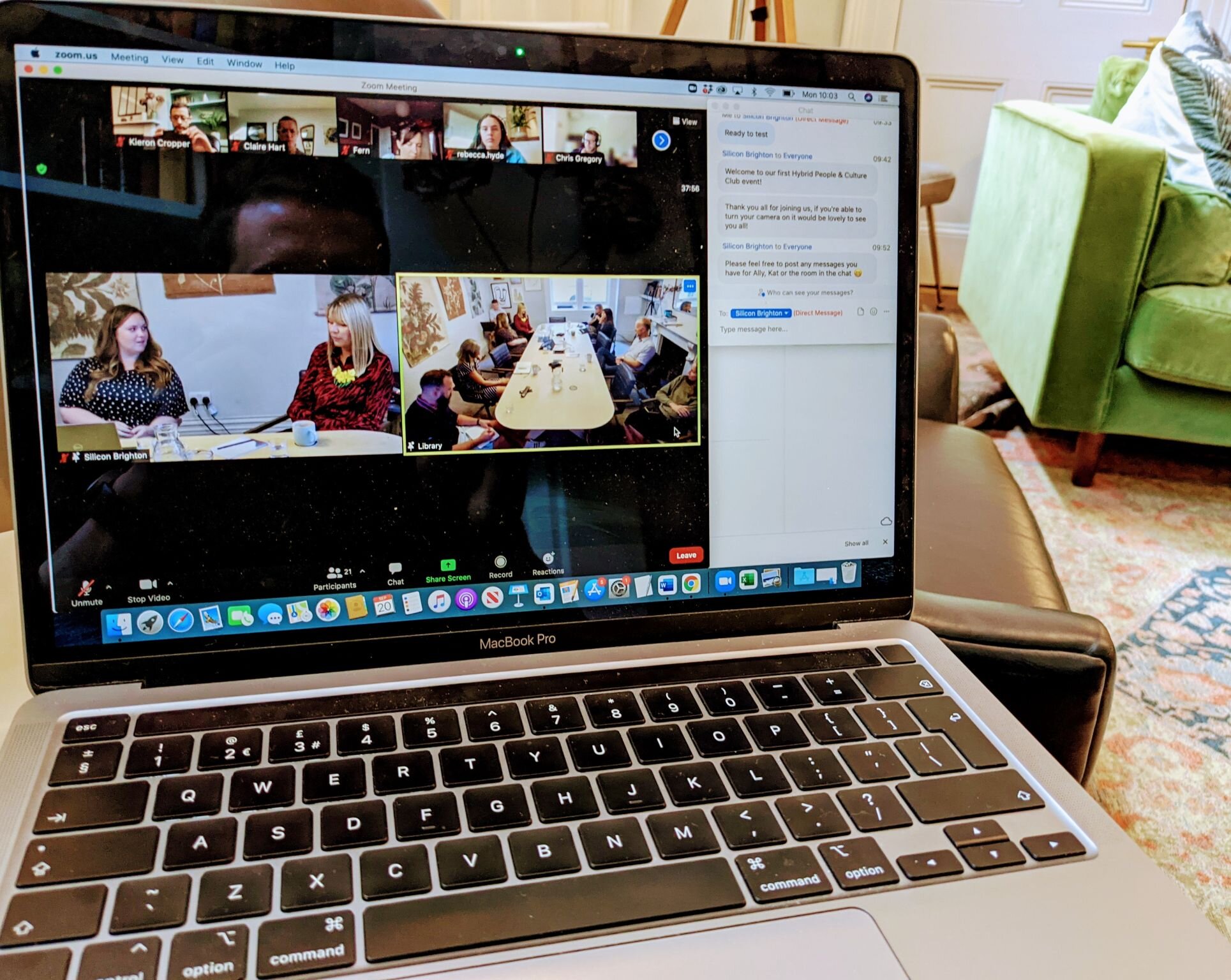Earlier this week, we successfully ran our first hybrid People and Culture Club event at Projects beautiful new co-working space – we even managed to have the tech running fairly seamlessly about 3 minutes before we went live!
Our first hybrid session was on one of my favourite topics: building a scalable learning culture, where we were joined by the wonderful Cat Harris (L&D Manager at Mediabrands).
It was fantastic to see so many of you there – whether in-person or virtually. For anyone who couldn’t make it or fancies revisiting some of the important points from Monday’s session, read on for our key takeaways:
Get the foundations right
For people to want to learn and feel they can make it a priority, you need to get the foundations right first. That means creating an environment where people feel psychologically safe – opening up about their own development needs, being proud of their interests and career aspirations and feeling comfortable to take risks and try new things. Before you invest elsewhere, start here. It costs nothing.
Prioritising learning
The reality is that most of us are running at pace. We’re under pressure to deliver against tight deadlines and we’re constantly wearing too many hats. It’s unsurprising people feel unable to prioritise their own learning if business as usual is ‘all systems go’. The only way for that to change is if businesses can prioritise learning and make sure it’s not trumped by deadlines or client demands. Create a culture where personal and professional growth holds equal value to other business priorities.
Learning in a hybrid world
This one’s a hard nut to crack and there’s no magic wand here; the answer is it probably depends on your culture.
Cat explained that at MediaBrands, people will be offered the opportunity to join events either in person or digitally, with separate events for each. If you choose to run a truly hybrid event, tools such as Miro (a digital collaboration platform) can improve interactiveness between those in the room and those dialling in.
Encouraging cameras on, contracting about how the group wants to work together or getting people to sign into the conferencing software from their laptop (cameras on, mic off, sound on their laptop off) can create a more equitable experience too. Whatever you choose to do, make it fun. Firestarter questions (generic questions that everyone can get involved with) make for a great opportunity to raise the psychological safety amongst the group.
Building a coaching culture
The number one thing people want in terms of development is access to coaching or mentoring. However, the reality is external coaching and mentoring is expensive and often ringfenced for senior members of the team (this needs to change, by the way!). A great way to shift towards a coaching culture is to invest in your leadership and management team’s coaching abilities. This doesn’t need to be with formal qualifications, but understanding how to apply a coaching approach to one-to-ones, career conversations and every day problem solving will in turn show benefits at all levels of your business.
Learning without the £££
An unlimited learning budget would be dreamy, but not a reality for most of us. However, there’s tonnes you can do without burning a hole in your back pocket. Here’s a few ideas to get you started:
● Sofa Sessions – Gather your team somewhere comfy! This should be hosted by someone internally and could cover a variety of topics. It could be a session about a coding language, how to nail delivering presentations or hearing from someone about a lived experience.
● Lunch and Learns – Take your team out for lunch. This is a slightly more formal learning environment with the added bonus that lunch is on you (people are giving up their lunchtime, after all). This option is especially great for small teams of 3-12 people.
● Support Network – In the session we discussed how this was hugely successful when rolled out at Brandwatch. The support network involved volunteers putting their name forward to be contacted as someone having lived through a specific experience e.g. having gone through the menopause, growing in a new role or even living with HIV. Could this be helpful at your organisation?
● Time Flexibility – This option is often favoured in tech teams wanting to focus some time on a specific non-work-related project. To help boost learning, development and motivation why not offer the whole business no-strings-attached time to focus on their development? Whether that’s time to read a book, watch videos on YouTube or have a conversation with a colleague, this is a fantastic low-cost way to give more back to your team.
Measuring return on investment
Eek. We’ll be honest, it’s not one we’ve totally nailed. There are so many factors that can influence the return on investment, so promising a financial ROI can be particularly challenging. However, here are things we know L&D interventions positively impact:
● Retention
● Promotions/ career advancement
● Attracting talent
● Productivity
● Quality of work
● Engagement
● Confidence
● Decision making
● Trust in leadership
Things that have helped us better measure the ROI a learning intervention include:
● Understanding and agreeing the learning outcomes/ measures with key stakeholders
● Managing expectations about what other external factors may positively or negatively impact ROI
● Measuring ‘softer’ (but hugely important) outcomes such as greater confidence
● Setting individual learning outcomes and measuring the success against those
How to hybrid?
Now, before I talk about what’s to come for the People and Culture Club, here’s a few tips for successfully running a hybrid event from our first go at it:
● Do a test run. From testing the ‘at home’ experience to making sure those in the room can see those dialling in from elsewhere.
● Use a professional free-standing camera to spotlight the speaker(s) or facilitator(s). Ideally, position the camera as close to the screen showing those who have dialled in. This’ll save you having to talk into a camera without seeing the person you’re talking to. This is a lesson learnt from Monday!
● Take time to facilitate both groups and be prepared to switch your style. It’s important both groups of people feel they’re getting an equitable experience.
● Set up a laptop or iPad that’ll enable you to see the chat function, so you can respond to any questions people have.
● Have a co-facilitator, or someone managing the tech. Big thanks to James from the Silicon Brighton team, who helped make sure all the tech worked as smoothly as possible.
● Ask for people’s patience. It’s a new experience for most of us and in reality, you might not have all the tech you might like. People are patient and don’t expect a perfect performance the first time.
Want to join us next time?
Our next event is on Thursday 11 November, where Winnie Mann (HR Director at Acquired.com) will be joining us to explore how you can codify your culture by creating scalable people-practices. We’ll be back in person at the wonderful space at Projects, or you can join us online.
Reserve your tickets here.
Christmas Partaaay
It’s September, I know. But I’d love to invite you for a festive drink and a bite to eat. No agenda other than good conversation and a chance to raise a glass for what’s been another difficult year for us People-people. I’ll be following up with more details on this soon, so make sure to keep an ear out!
More about our partners
Ally Jones helps high-growth companies to scale by equipping Founders and their leadership teams with the tools and confidence to create a culture of high-performance. She’s an executive coach and founder of the Brighton-based leadership development consultancy, Alison Jones Coaching.
A special thanks to our partners at Projects for helping us deliver this event series. Projects are a flexible, service-led workplace provider with purpose, whose mission is to build and support a community of good people who want to use business as a force for good. You can find out more information about the co-working community here.


